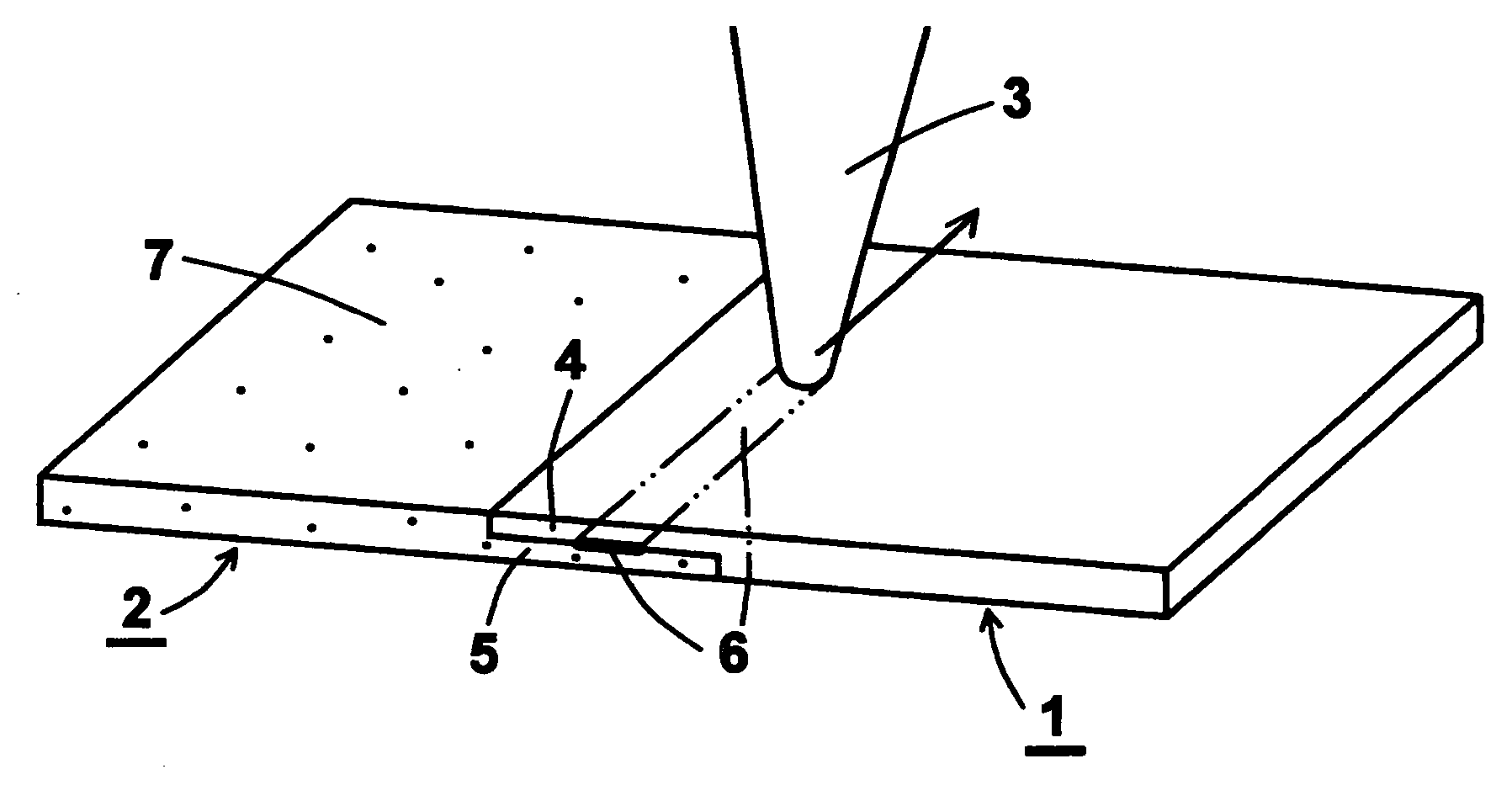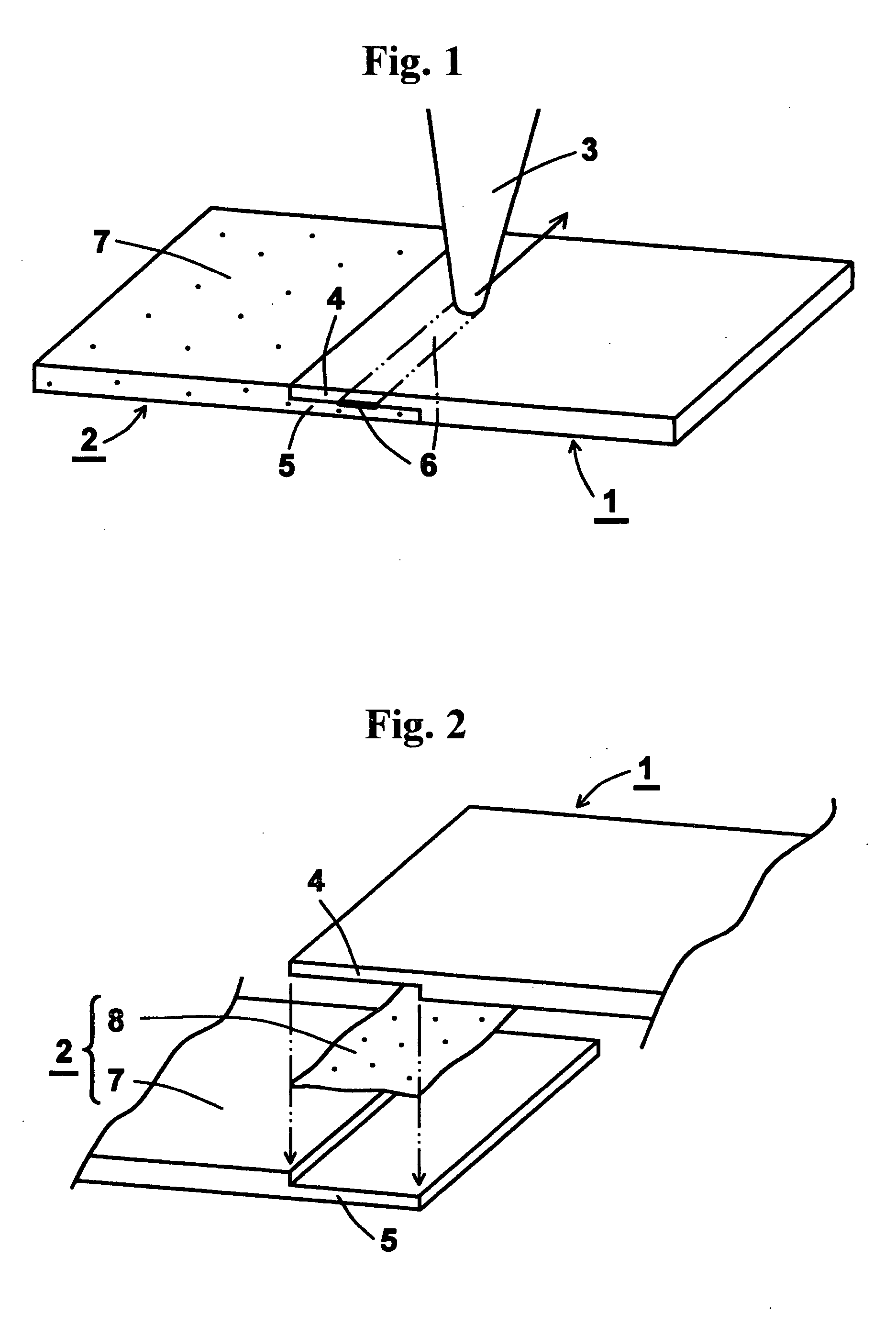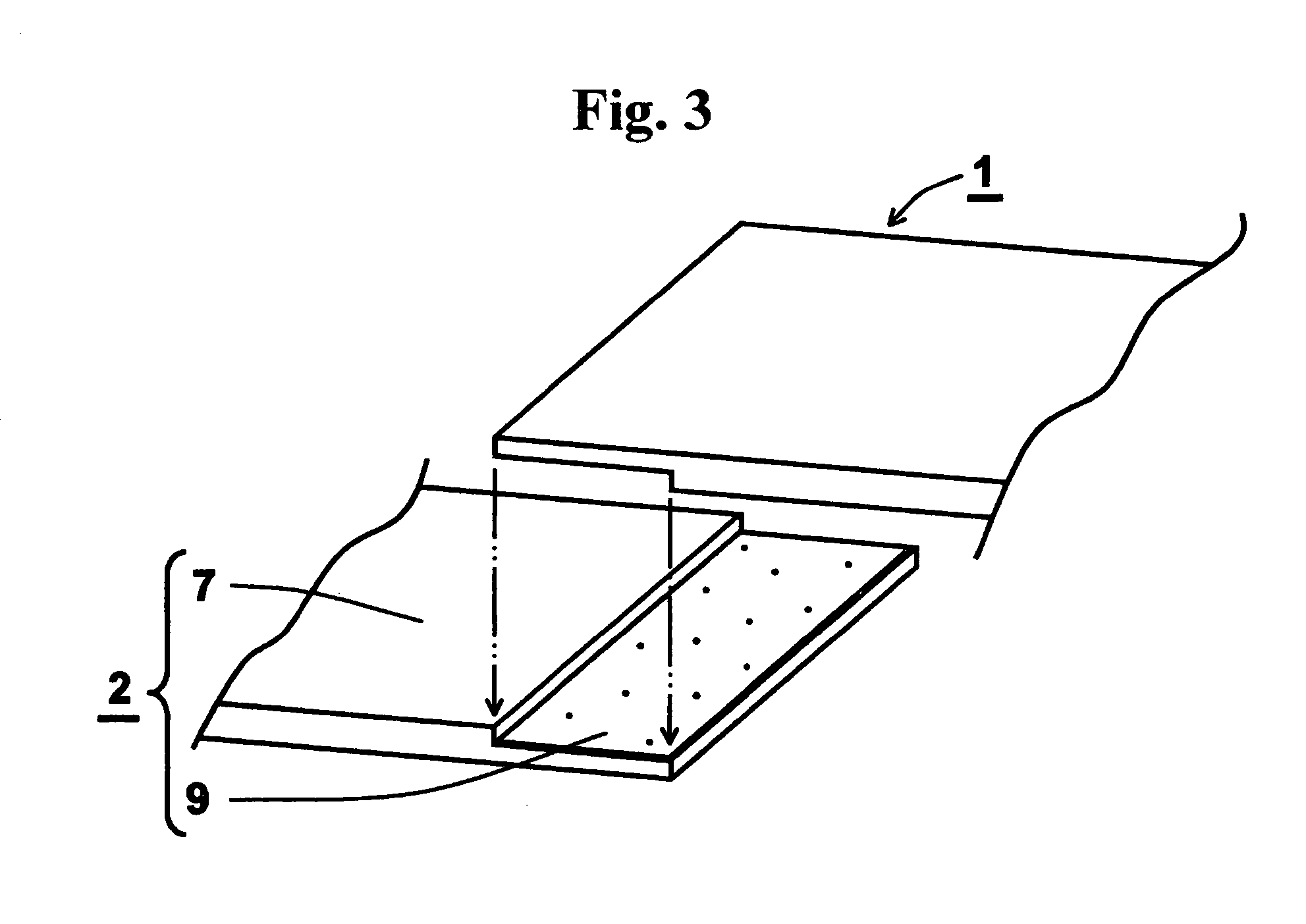Method for laser welding
- Summary
- Abstract
- Description
- Claims
- Application Information
AI Technical Summary
Benefits of technology
Problems solved by technology
Method used
Image
Examples
manufacturing example 1
Manufacturing of the Test Piece (A) as Laser-Transmissible Resin Workpiece
[0081] 1000 g of the polypropylene resin of catalog No. BC05B that is available from Japan Polychem Co., Ltd. and 12 g of titanium oxide treated on the surface thereof by aluminum laurate of catalog No. MT-100S that is available from Tayca Corporation were added in the tumbler made of stainless steel, and mixed with stirring for 1 hour to prepare the composition. The obtained composition was executed by injection molding at 220 degrees Centigrade of temperature of a cylinder and 40 degrees Centigrade of temperature of a metal mold with general procedures using the injection molding machine of catalog No. Si-50 that is available from Toyo Machinery & Metal Co., Ltd. to manufacture the test piece (A) of plate having the length of 70 mm, the width of 18 mm and the thickness of 4 mm with the proviso of the end portion having the stair 4 of the thickness of 2 mm and the length of 20 mm from the edge by lacking an ...
manufacturing examples 2 to 5
Manufacturing of the Test Pieces (B), (C), (D) and (E) as Laser-Transmissible Resin Workpiece
[0082] The procedures were executed as same as Manufacturing Example 1 except for using 36 g of the same titanium oxide of Manufacturing Example 1 under Manufacturing Example 2; 24 g of zinc oxide of catalog No. MZ-303 that is available from Tayca Corporation under Manufacturing Example 3; 24 g of antimony trioxide of catalog No. KN that is available from Sakai Chemical Industry Co., Ltd. under Manufacturing Example 4; and 36 g of antimony trioxide of catalog No. KN that is available from Sakai Chemical Industry Co., Ltd. under Manufacturing Example 5 instead of specified titanium oxide of Manufacturing Example 1 to manufacture the test pieces (B), (C), (D) and (E). The surface and appearance thereof were glossy, regular and exhibited the hue of white uniformly.
manufacturing example 6
Manufacturing of the Test Piece (F) as Laser-Transmissible Resin Workpiece
[0083] 1000 g of the polycarbonate resin of catalog No. LEXAN 1000 Flame-retardancy grade: V-0 that is available from Japan G. E. Plastics and 12 g of titanium oxide of catalog No. MT-100S that is available from Tayca Corporation were added in the tumbler made of stainless steel, and mixed with stirring for 1 hour to prepare the composition. The obtained composition was executed by injection molding at 290 degrees Centigrade of temperature of the cylinder and 80 degrees Centigrade of temperature of a metal mold with general procedures using the injection molding machine of catalog No. Si-50 that is available from Toyo Machinery & Metal Co., Ltd. to manufacture the test piece (F) of plate having the length of 70 mm, the width of 18 mm and the thickness of 4 mm with the proviso of the end portion having the stair 4 of the thickness of 2 mm and the length of 20 mm from the edge by lacking an under side thereof a...
PUM
| Property | Measurement | Unit |
|---|---|---|
| Percent by mass | aaaaa | aaaaa |
| Percent by mass | aaaaa | aaaaa |
| Percent by mass | aaaaa | aaaaa |
Abstract
Description
Claims
Application Information
 Login to View More
Login to View More - R&D
- Intellectual Property
- Life Sciences
- Materials
- Tech Scout
- Unparalleled Data Quality
- Higher Quality Content
- 60% Fewer Hallucinations
Browse by: Latest US Patents, China's latest patents, Technical Efficacy Thesaurus, Application Domain, Technology Topic, Popular Technical Reports.
© 2025 PatSnap. All rights reserved.Legal|Privacy policy|Modern Slavery Act Transparency Statement|Sitemap|About US| Contact US: help@patsnap.com



